How wide are your tyres? It’s likely you’re riding whatever width tyres your bike was sold with, and the type of bike you’re riding largely defines tyre width. Bicycle tyres come in a huge array of widths, from skinny 19mm tyres designed for the velodrome to four-inch mountain bike tyres for battling through deep snow.
There’s a trend in the road bike market at the moment for wider tyres. Even racing bikes are shifting away from the previous standard 23mm width to fatter rubber, typically 25mm or 26mm wide. Non-racing cyclists are increasingly adopting even wider tyres in the pursuit of comfort on lousy road surfaces and the versatility to easily handle dirt roads and tracks. If you’re wondering what the benefits of wider tyres are, have a read of this feature to discover the pros and cons of wider tyres.
The width of the tyres on your bike depends on a large number of factors, like the riding you do and whether you have mudguards, but the biggest is simply what you can physically fit in the frame and fork. This usually reflects the purpose of the bicycle, with racing bikes generally designed around narrower tyres, and touring and gravel bikes designed to accept wider tyres. However, with wider tyres getting increasingly popular, even race bikes are compatible with much fatter tyres than 10 years ago.
>>Read more: Your guide to road cycling tyres + 14 of the best option
Let's take a look at the tyre widths that work well for different bike types and uses.
Race bikes have the narrowest tyres. They are narrow to reduce weight and improve aerodynamics. The common standard for many years was 23mm (it used to be even narrower) but that has changed as the pro peloton adopted wider tyres, with 25mm slowly becoming the default choice. Some of the latest race bikes have been designed to accommodate even wider tyres, up to 28mm in some cases.
Sportive and endurance bikes, built for comfort but loosely based on race bikes, typically accept wider tyres, with 28mm a common standard. Outright speed and low weight are less of a priority on an endurance bike, and a considerable improvement in comfort can be achieved with even only marginally bigger tyres. Not all bikes are built the same, though, and some accept wider tyres and some manage to accommodate wide tyres with full-length mudguards fitted. As endurance bikes mature so the market is pushing for even wider tyre compatibility.
Outright speed and low weight are less of a priority on an endurance bike, and a considerable improvement in comfort can be achieved with even only marginally bigger tyres. Not all bikes are built the same, though, and some accept wider tyres and some manage to accommodate wide tyres with full-length mudguards fitted. As endurance bikes mature so the market is pushing for even wider tyre compatibility.
Their ability to take very fat tyres is partly why these bikes have gotten popular. Some accommodate up to 45 or 50mm tyres, though there is nothing to stop you fitting narrower tyres if it's mainly for road use. These bikes are designed for tackling a wide range of road surfaces and off-road tracks and a bigger tyre helps deal with bumpy terrain, provides grip and keeps punctures at bay. As it's a relatively new category and there are no standards when it comes to the perfect tyre width, no two gravel/adventure bikes are the same. Tyre width and choice comes down to the intended use and the ratio of rough to smooth stuff.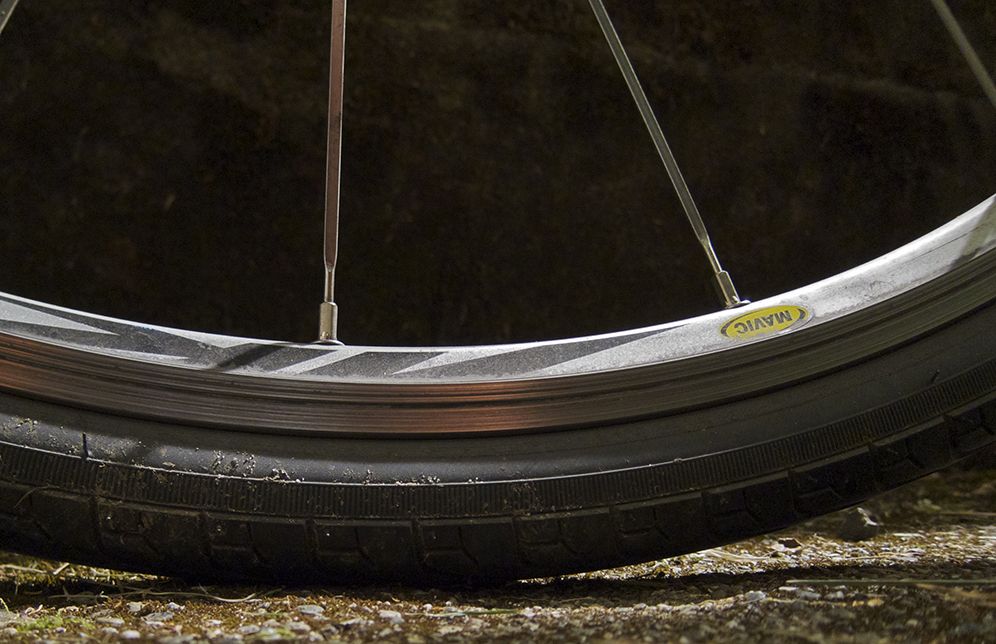
Some gravel/adventure bikes are based on cyclocross bikes, which are designed around 33mm tyres, the maximum allowed for racing by cycling's governing body the UCI. Other manufacturers have taken more inspiration from mountain bikes, with bikes that can accommodate 2.1in tyres intended for 29er mountain bikes. Almost all gravel/adventure bikes are designed with disc brakes; the removal of the caliper rim brake really increases the width of the tyre that can be fitted.
While road racing cyclists have only just cottoned onto the benefits of wider tyres, touring cyclists have been advocates of wider tyres for years, where comfort trumps outright speed and acceleration.
Touring bikes come in many shapes and sizes depending on the intended usage, from light and fast tourers based loosely on regular road bikes to round-the-world heavy-duty models. Tyre size typically varies from 25mm to 42mm, and some heavier duty touring bikes use 26-inch mountain bike wheels with even bigger volume tyres. Many touring bikes are very traditional in design and use rim brakes, which limits the maximum tyre width, though some touring bikes use mountain bike style V-brakes to provide more tyre clearance. Disc brakes are becoming common on touring bikes, like this Ridgeback Panorama below.
Many touring bikes are very traditional in design and use rim brakes, which limits the maximum tyre width, though some touring bikes use mountain bike style V-brakes to provide more tyre clearance. Disc brakes are becoming common on touring bikes, like this Ridgeback Panorama below.
With touring bikes, the tyre you choose depends on the sort of riding you want to do. Add in lots of off-road and gravel and you probably want a tyre with some tread to provide grip on the loose surface and comfort over the rough terrain. If it’s for blasting around the lanes on a Sunday morning or with a light luggage, a narrower and lighter tyre will be a better fit.
Commuting, city and hybrid bikes have tyre size influenced by the type of bike they’re loosely modelled on. Road bike-style commuting bikes might accept a tyre of around 28mm width, often with space for mudguards, but some commuting bikes, and those based on mountain bikes, will take up to a 44mm tyre.
To help you choose the right tyre for your bike, tyres are made to a common standard, so you can easily find a tyre to fit your wheels. ISO 5775 is an international standard for labelling the size of bicycle tyres and rims, originally developed by the European Tyre and Rim Technical Organisation (ETRTO).
Related: Tyre reviews
The ETRTO tyre label comprises two numbers separated by a dash. This number is usually on the sidewall of the tyre, something like 28-622. The first number is the inflated width of the tyre, the second figure is the diameter of the bead seat of the matching rim, in millimetres.
If your tyre and rim have the same bead seat diameter, they'll fit together. If not, they won't. People who deal with older and more obscure bike types have to worry about this stuff, as there are some combinations that look like they will fit, but don't. However there are only a handful of tyre sizes in common use for adult bikes in the UK.
Far and away the most common size for road bike wheels is usually referred to as 700C and has a bead seat diameter of 622mm.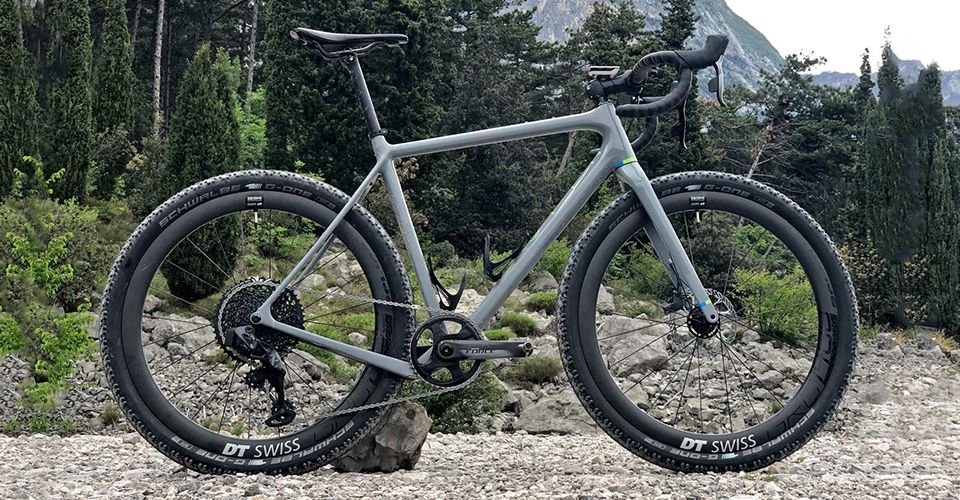 The '700C' bit comes from a traditional French wheel standard based on the outer diameter of the inflated tyre, 700mm. Originally, 700C tyres were quite fat, to get the tyre to 700mm across, so ETRTO 622 and 700C describe the same wheel size but 622mm is the actual measurement of the rim while 700C describes the outer diameter of the tyre. There's a big range of tyre widths now available for 622mm rims: a 33mm cyclocross tyre will have a bigger diameter than a skinny 19mm time trial tyre, for example.
The '700C' bit comes from a traditional French wheel standard based on the outer diameter of the inflated tyre, 700mm. Originally, 700C tyres were quite fat, to get the tyre to 700mm across, so ETRTO 622 and 700C describe the same wheel size but 622mm is the actual measurement of the rim while 700C describes the outer diameter of the tyre. There's a big range of tyre widths now available for 622mm rims: a 33mm cyclocross tyre will have a bigger diameter than a skinny 19mm time trial tyre, for example.
Tyre widths available for the 700C/622mm size standard vary from 18 to 47mm, with popular widths such as 23, 25 and 28mm in the mix. The big-wheeled mountain bikes known as 29ers also use this size, so there are off-road tyres up to a whopping 75mm wide.
As mentioned above, expedition touring bikes also occasionally use the 26-inch tyre size popularized by mountain bikes in the 1980s, which has a bead seat diameter of 559mm. Some bikes intended for junior and smaller riders use a different 26-inch size, 650C, with a 571mm bead seat diameter, and you very occasionally encounter yet another alleged 26-inch size, 650A with a 590mm bead seat diameter. Another 26-inch variant, 650B, is popular for mountain bikes and has a bead seat diameter of 584mm; Cannondale uses this size for its Slate gravel bike and British framebuilder and road.cc blogger Richard Hallett is a fan too.
Another 26-inch variant, 650B, is popular for mountain bikes and has a bead seat diameter of 584mm; Cannondale uses this size for its Slate gravel bike and British framebuilder and road.cc blogger Richard Hallett is a fan too.
While you could fit any width tyre to any width rim, it’s best to find a suitable width rim to match the tyre width. The CTC recommends the ideal relationship between a rim and tyre as being about 1.8 times. Rims measuring 15 to 17mm across are the most common used for road bikes and accommodate tyres ranging in width from 23 to 50mm.
| Tyre Section width | ||||||||||||||||
|---|---|---|---|---|---|---|---|---|---|---|---|---|---|---|---|---|
| Rim width (mm) | 18 | 20 | 23 | 25 | 28 | 32 | 35 | 37 | 40 | 44 | 47 | 50 | 54 | 57 | 60 | 62 |
| 13 | x | x | x | x | ||||||||||||
| 15 | x | x | x | x | ||||||||||||
| 17 | x | x | x | x | x | x | x | x | x | |||||||
| 19 | x | x | x | x | x | x | x | x | x | x | x | x | ||||
| 21 | x | x | x | x | x | x | x | x | x | x | ||||||
| 23 | x | x | x | x | x | x | x | x | ||||||||
| 25 | x | x | x | x | x | x | x | |||||||||
| 27 | x | x | x | x | x | x | ||||||||||
| 29 | x | x | x | x | ||||||||||||
Schwalbe has produced this handy table which lists recommended tyre and rim width combinations. You can see that you can comfortably fit a 28mm tyre to a 15mm wide rim, but it’s not recommended to fit the same tyre to a 13mm width rim. You can find out the rim width if it’s not printed on the rim, but using a tape measure to measure the distance between the inner rim walls.
You can see that you can comfortably fit a 28mm tyre to a 15mm wide rim, but it’s not recommended to fit the same tyre to a 13mm width rim. You can find out the rim width if it’s not printed on the rim, but using a tape measure to measure the distance between the inner rim walls.
While you might be able to fit wider tyres to your rims, you might not necessarily have clearance in the frame and fork to accommodate the wider tyres. A bike manufacturer usually specifies a maximum width tyre for each model in its range, with a safe range of clearance between the tyre and frame, and you can normally find this information on its website.
The width of the rim can impact the width of the tyre. A 25mm tyre fitted to a wide rim can actually measure 27mm across, and it's a trick that some manufacturer have recently employed with their latest endurance bikes.
That depends on the width of your current tyres and if your frame and rim will accept wider tyres.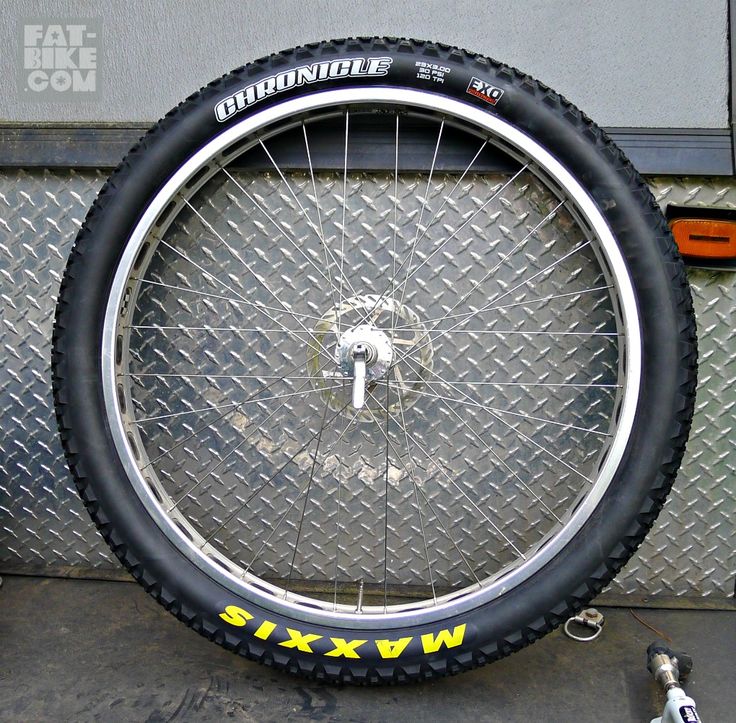 Fitting wider tyres is a common upgrade and even going from 23mm to 25mm, or 28mm to 32mm, can provide a noticeable change in the ride quality of the bike. Now hopefully you'll have the information to choose the right width tyres for your wheels and bike.
Fitting wider tyres is a common upgrade and even going from 23mm to 25mm, or 28mm to 32mm, can provide a noticeable change in the ride quality of the bike. Now hopefully you'll have the information to choose the right width tyres for your wheels and bike.
Your bicycle’s tires might not be something you think about very often, but they have crucial implications for every aspect of your ride. Better understanding how your mountain, gravel, and road bike tire size is measured can help you fine-tune your equipment, and learning how tire size relates to performance can make you faster when it counts. What are the basics of bike tire size?
Bike tires are typically measured in two dimensions— diameter and width. The diameter measurement is an approximation of the tire’s total outside diameter including treads, and the width is a measurement of the approximate total width of the tire when mounted and inflated.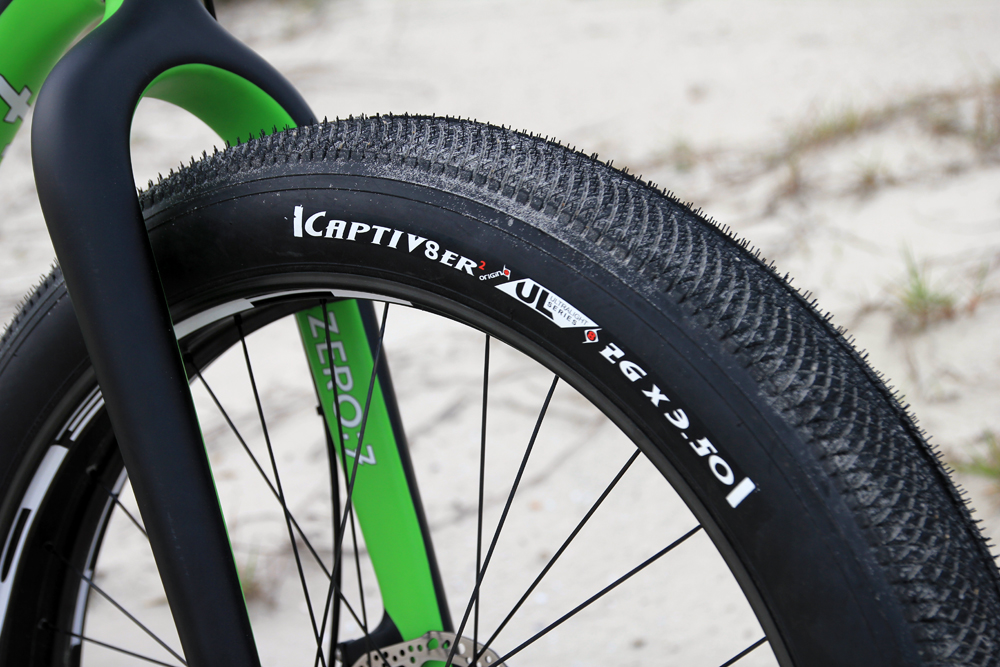 For mountain bike tires these dimensions are expressed in inches, while a millimeter-based system called French sizing is used for road, gravel, and track. For example, a 29 x 2.25 mountain bike tire is about 29” in diameter and about 2.25” wide, while a 700c x 25 road tire is approximately 700mm in diameter and 25mm wide.
For mountain bike tires these dimensions are expressed in inches, while a millimeter-based system called French sizing is used for road, gravel, and track. For example, a 29 x 2.25 mountain bike tire is about 29” in diameter and about 2.25” wide, while a 700c x 25 road tire is approximately 700mm in diameter and 25mm wide.
This makes it pretty straightforward to fit a modern tire to a modern rim—a 700c tire will almost definitely fit a 700c road rim (we’ll explain that “c” later), and a 29” tire will likely fit a 29” mountain bike rim. But some obsolete or unusual sizes can be misleadingly labeled, and any tire’s nominal measurements (especially width) are really just approximations. Rim width and tire pressure can significantly influence the size of a tire when mounted and inflated, and tires often measure a bit larger or smaller when installed than the printed dimension would suggest.
To reduce confusion, most tires are also labeled with a second system of measurements called ISO (formerly known as ETRTO).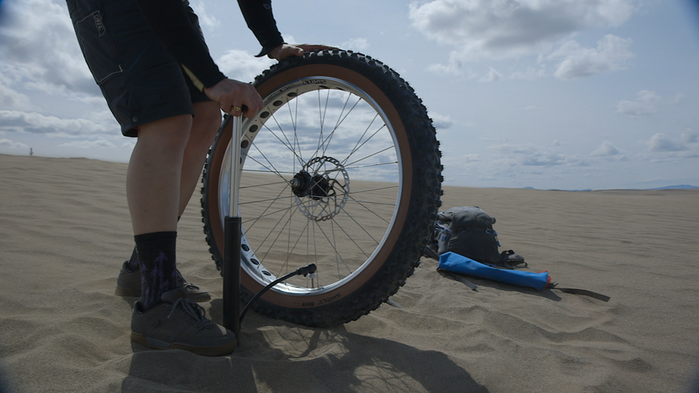 The ISO measurement displays the tire’s nominal width in millimeters, followed by the diameter of the tire’s bead (the surface that actually attaches to the rim) in millimeters (ex: 25 x 622 is a common road tire). This measurement can help resolve any ambiguity about whether a tire will fit a particular rim, but as with other systems, the ISO measurement of a tire’s width is an approximation and may be impacted by pressure and rim width.
The ISO measurement displays the tire’s nominal width in millimeters, followed by the diameter of the tire’s bead (the surface that actually attaches to the rim) in millimeters (ex: 25 x 622 is a common road tire). This measurement can help resolve any ambiguity about whether a tire will fit a particular rim, but as with other systems, the ISO measurement of a tire’s width is an approximation and may be impacted by pressure and rim width.
Nearly all modern road bikes use 700c wheels and tires. It used to be widely accepted that narrower tires were faster and 23mm was the standard width. But recent research has proven wider tires to be faster and more comfortable in most situations. As a result, 700c x 25mm and 700c x 28mm are now the most common road tire sizes; many riders prefer even wider widths of 30mm or 32mm. The limiting factor is usually the bike itself, with some frames unable to accommodate tires beyond a certain width. Most new road frames can at least fit up to 28mm tires but double-check your frame’s allowance before sizing up.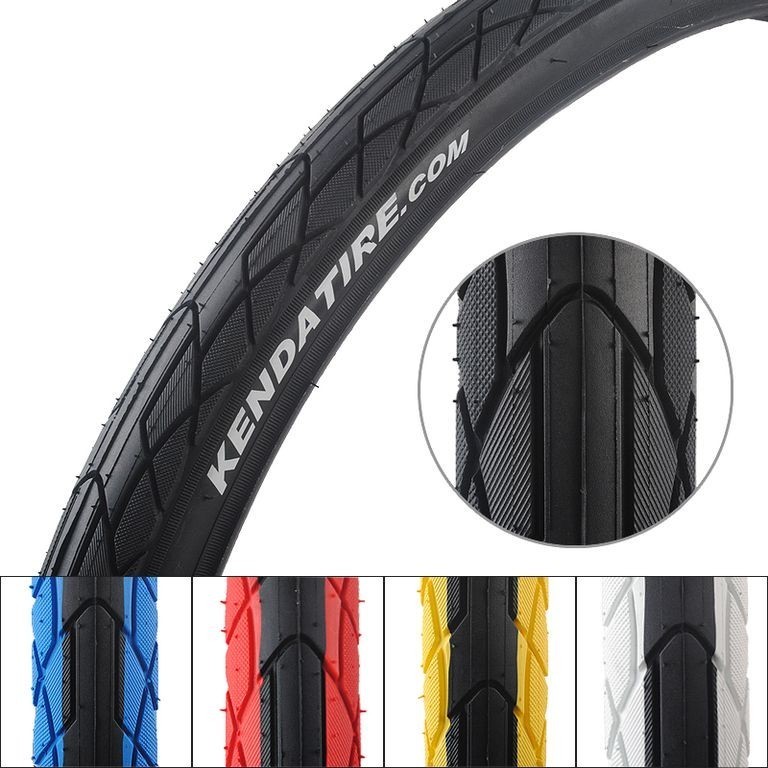
A few other less common wheel and tire sizes exist for road bikes. 650b (ISO 584) and the rarer 650c (ISO 571) are two examples, both sometimes used on bikes for smaller riders. The letter that follows the diameter measurement in French tire sizes originally delineated width, but it’s now mostly just useful to differentiate between similarly-named but incompatible sizes. For instance, a 650b tire will not fit on a 650c rim.
It’s also important to understand the different types of mutually-incompatible road tires. Clinchers are most common; these are the familiar tires that seat into a walled rim around an inner tube. Certain clincher rims can also be used with tubeless tires, which use a liquid sealant in place of an inner tube. Finally, tubular tires are permanently sewn closed around an internal tube and are glued into a specially-made rim. All 3 of these tire types use the same sizing standards and terminology but are generally not interchangeable.
Tires are printed with a manufacturer’s recommended pressure range, and road riders used to think inflating their tires to the highest possible pressure was fastest.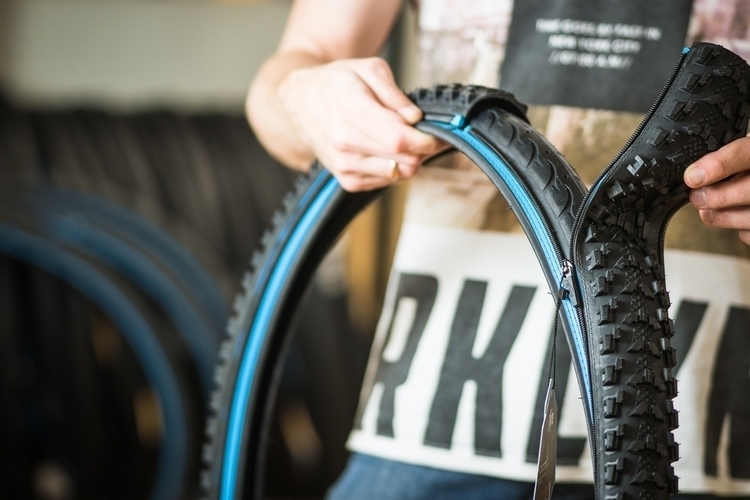 But with the move to wider tires has also come a trend towards lower pressure. The science of tire pressure is complicated, but wider tires require less pressure for the same volume of air than narrower tires, allowing for a more comfortable ride. Additionally, wider tires at lower pressures reduce bouncing and are actually faster on most surfaces than smaller, harder tires.
But with the move to wider tires has also come a trend towards lower pressure. The science of tire pressure is complicated, but wider tires require less pressure for the same volume of air than narrower tires, allowing for a more comfortable ride. Additionally, wider tires at lower pressures reduce bouncing and are actually faster on most surfaces than smaller, harder tires.
It’s tough to make a generalized recommendation for pressure—riding conditions, your weight, and the tire’s size all play a part. But generally, the larger the tire and the rougher the surface, the lower the optimal pressure. With each 3mm increase in tire width, you can usually reduce pressure by 1 Bar (~14 psi). Also, tubeless tires can generally be ridden at lower pressures than tubed tires of the same size. Some tire and rim manufacturers have calculators on their websites that make personalized recommendations for pressure; these are a great starting resource to make your ride faster and more efficient.
Adaptive Training
Get the right workout, every time with training that adapts to you.
Check Out TrainerRoad
Mountain bike tires are measured in inches and are offered in 3 non-interchangeable diameters corresponding to common mountain bike wheel sizes. Most popular for high-end mountain bikes are 29” tires and wheels. Next come 27.5” setups, preferred by some riders who like smaller, slightly more maneuverable wheels. And finally, 26” wheels and tires used to be the standard, but are now found mostly on entry-level and kids’ bikes.
Tires at each of these diameters are available in a wide variety of widths, which riders select for the specifics of their discipline and terrain. Cross-country racers usually choose comparatively narrow tires ranging from 1.9” to 2.25” wide. Trail, all-mountain, and enduro bikes are normally equipped with wider tires between 2.25” and 2.4”, and downhill tires are even wider at 2.4” to 2.6”. Finally, fat bike tires are mounted on purpose-built rims and push the boundaries even further, sometimes measuring as wide as 5”.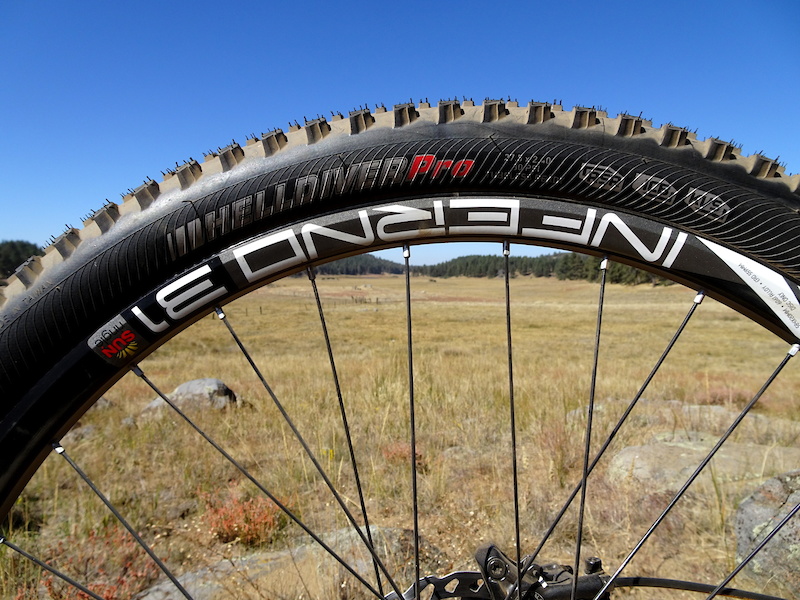 The specifics of tire choice are carefully considered by mountain bikers, with racers often choosing different widths and tread patterns depending on the course and conditions.
The specifics of tire choice are carefully considered by mountain bikers, with racers often choosing different widths and tread patterns depending on the course and conditions.
Interestingly, most mountain bike wheel sizes are actually the same diameter as road wheels—29” wheels are equivalent to 700c, while 27.5” are the same as 650b. But you wouldn’t want to put tires intended for one on a wheel intended for the other, as the rim’s width is dramatically different for road and mountain bikes and would interfere with the tire’s performance.
Tire pressure is a crucial concern in mountain biking. Small changes in pressure can dramatically impact performance and handling on the trail, and experienced mountain bikers regularly adjust pressure depending on terrain, conditions, riding style, and tire choice.
Because all of these variables are factors to consider, it’s nearly impossible to make a general recommendation for mountain bike tire pressure. Online calculators can help suggest a starting pressure based on equipment, weight, and conditions, but in the end, it’s ultimately a matter of personal preference and learning from experience. A good strategy is to treat the first few rides on a new setup or in new terrain as experiments. Carry a digital gauge, start with pressure on the higher side, and gradually let a few psi out/ add some pressure back in as you ride to experiment with what works and feels best. Check and record your pressure when you find the sweet spot and use this as your starting point for future rides.
Online calculators can help suggest a starting pressure based on equipment, weight, and conditions, but in the end, it’s ultimately a matter of personal preference and learning from experience. A good strategy is to treat the first few rides on a new setup or in new terrain as experiments. Carry a digital gauge, start with pressure on the higher side, and gradually let a few psi out/ add some pressure back in as you ride to experiment with what works and feels best. Check and record your pressure when you find the sweet spot and use this as your starting point for future rides.
There are a few general principles to keep in mind when finding the right pressure. Typically, the larger your tire, the lower the optimal pressure. Tires with thinner casings require higher pressure, as do heavier riders. Rocky terrain may also necessitate higher pressure to avoid flats, while lower pressures can be used in smooth, grassy, or muddy conditions. Finally, some riders like to use tire inserts, which provide more flat protection and allow a few psi reduction in pressure.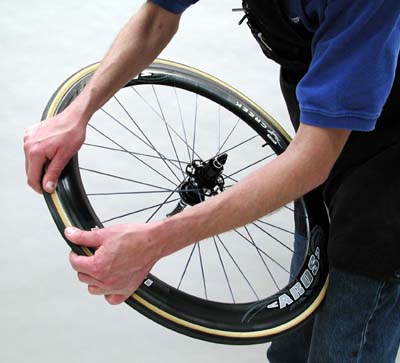
Gravel, cyclocross, and track cyclists also choose specific tire sizes and pressures to optimize performance.
Cyclocross bikes use 700c road wheels, so cyclocross tires are all designed for this standard diameter. In the past, most serious cyclocross racers used tubular tires, but tubeless tires have become increasingly popular over the last few seasons. Tires at CX events have traditionally been allowed up to a maximum width of 33mm, and UCI-governed events still impose this limit. Non-UCI races often allow larger tires, such as the 38mm maximum width allowed at USA Cycling masters, collegiate, and single speed national championships. Many local events impose no size restrictions at all—check your race’s rules to know for sure.
Gravel bikes used to be repurposed cyclocross bikes, but with dedicated gravel equipment introduced over the last few years tire options have greatly expanded.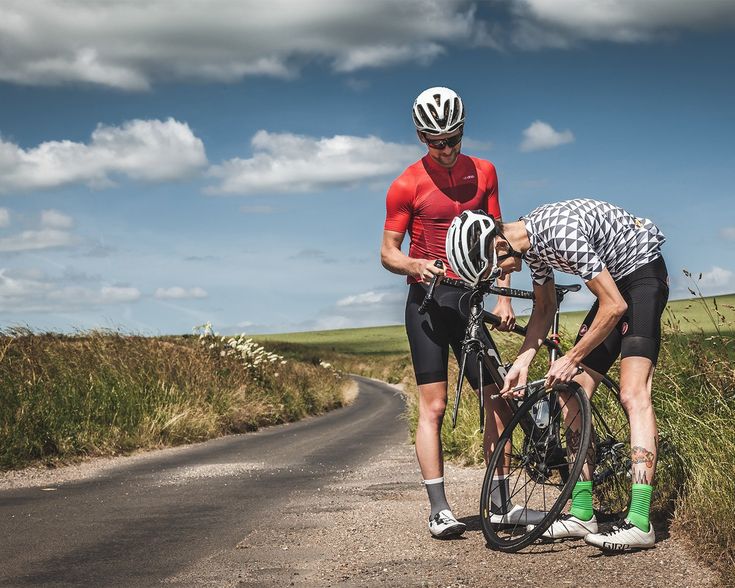 Most gravel bikes use 700c wheels, but 650b wheels are occasionally used for especially technical trail riding and bikepacking. Most new gravel bikes have clearance for tires ranging up to at least 42 or 45mm width, and some allow for even wider tires. Virtually all gravel riders use tubeless tires.
Most gravel bikes use 700c wheels, but 650b wheels are occasionally used for especially technical trail riding and bikepacking. Most new gravel bikes have clearance for tires ranging up to at least 42 or 45mm width, and some allow for even wider tires. Virtually all gravel riders use tubeless tires.
Gravel tires all balance speed and efficiency with offroad traction. Narrower tires with minimal treads are fastest on hardpack and paved surfaces but offer poor grip in loose corners. Wider tires with more aggressive tread patterns are more capable on loose terrain but roll much more slowly on smooth or paved roads. Gravel riders choose the width and tread pattern that offers the best balance for their local terrain, but may significantly adjust their tire choice and pressure for different conditions.
Like road bikes, track bikes use 700c wheels. But unlike on the road where slightly wider and softer tires are usually faster, on a smooth track harder and narrower tires have an advantage.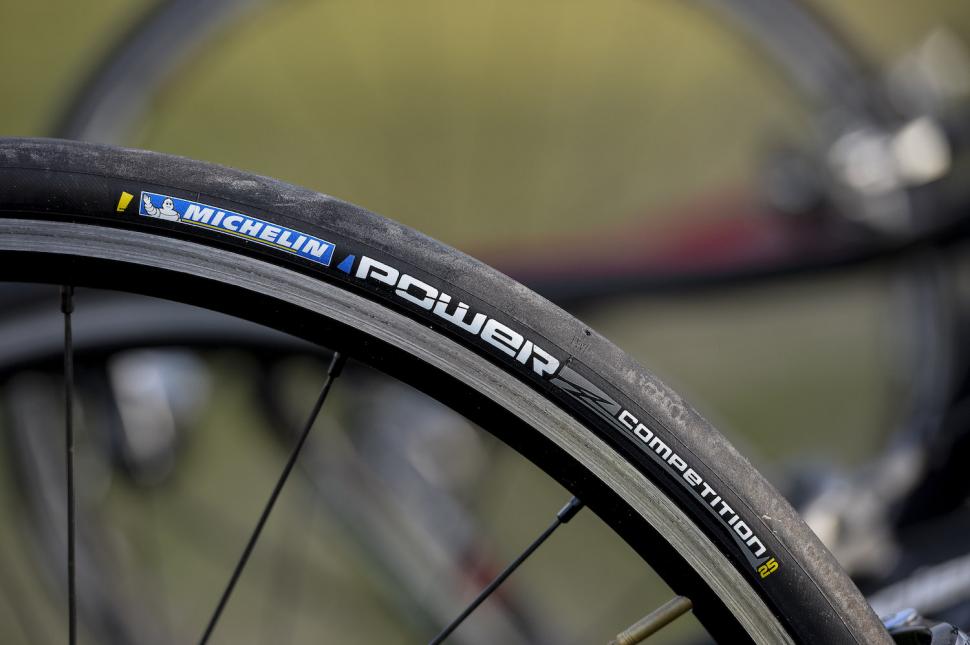 For this reason track racers still prefer 21mm – 23mm wide tubular tires inflated to very high pressures—usually 150 psi or more on indoor tracks. Racers on rougher outdoor tracks don’t inflate their tires quite this high, but they still use much more pressure than they would on the road, with relatively narrow tires offering little in the way of puncture protection.
For this reason track racers still prefer 21mm – 23mm wide tubular tires inflated to very high pressures—usually 150 psi or more on indoor tracks. Racers on rougher outdoor tracks don’t inflate their tires quite this high, but they still use much more pressure than they would on the road, with relatively narrow tires offering little in the way of puncture protection.
| Tire Size | Use/ Discipline | ISO Designation |
|---|---|---|
| 700c x 23mm – 32mm | Road/Track | 622 |
| 700c x 35mm – 50mm | Gravel and Mixed surface | 622 |
| 650b x 23mm – 25mm | Small road bikes | 584 |
| 650b x 45mm – 50mm | Gravel and Bikepacking | 584 |
| 26” x 2.1” – 2.3” | Cross Country MTB | 559 |
| 26” x 2.3” – 2.5” | Trail | 559 |
| 26” x 2.4” – 2.6” | Enduro/ Downhill | 559 |
27. 5” x 2.1” – 2.3” 5” x 2.1” – 2.3” | Cross Country MTB/ Gravel | 584 |
| 27.5” x 2.3” – 2.5” | Trail | 584 |
| 27.5” x 2.4” – 2.6” | Enduro and Downhill | 584 |
| 29” x 2.1” – 2.3” | Cross Country MTB | 622 |
| 29” x 2.3” – 2.5” | Trail | 622 |
| 29” x 2.4” – 2.6” | Enduro and Downhill | 622 |
bike tire pressurebike tire sizegravel bike tiresmountain bike tiresroad bike tires
90,000 how to choose a bike coverTable of Table of Contents
The size of the tires
Types of tires
Change the tires, if:
Tables
Tires Size of tires
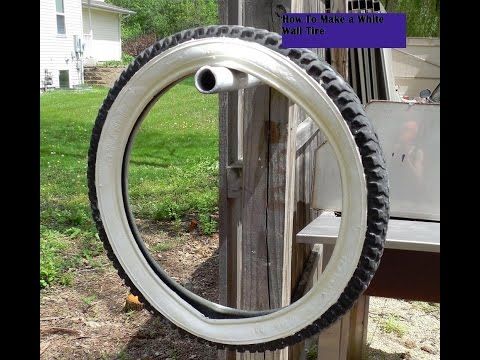
Important! Some tires have wear indicators - one or two small dimples. When they disappear, tires need to be replaced
Bicycle tires and tubes
Final price
5,799 ₽
Schwalbe | Tire Schwalbe Durano 700 x 28C
Buy
-10%
Final price Maxxis | Tire Maxxis Ardent, 27.5 x 2.4, 61-584, 60 TPI, Mountain
Buy
Final price
4 999 ₽
Schwalbe | Tire Schwalbe Durano 700 x 23C
Buy
Final price
4 999 ₽
Schwalbe | Tire Schwalbe Durano 700C x 25
Buy
-20%
Final price Maxxis | Tire Maxxis CrossMark II, 27. 5 x 2.25, 57-584, 60 TPI, Mountain
5 x 2.25, 57-584, 60 TPI, Mountain
Buy
-20%
Final price Schwalbe | Schwalbe Marathon 26 x 2.0 Tire
Buy
Final price
3 599 ₽
Schwalbe | Tire Schwalbe Land Cruiser Plus 26 x 2.0
Buy
-15%
Final price Maxxis | Tire Maxxis Pace, 27.5 x 2.1, 53-584, 60 TPI, Mountain
Buy
-10%
Final price Schwalbe | Tire Schwalbe Land Cruiser Plus 27.5 x 2.0
Buy
-10%
Final price
3 329 ₽
3 699 ₽
Maxxis | Tire Maxxis Ardent, 27.5 x 2.4, 61-584, 60 TPI, Mountain
Buy
-20%
Final price Maxxis | Tire Maxxis Ikon, 27.5 x 2.2, 56-584, 60 TPI, Mountain
Buy
-15%
Final price Maxxis | Tire Maxxis Overdrive Excel, 26 x 2.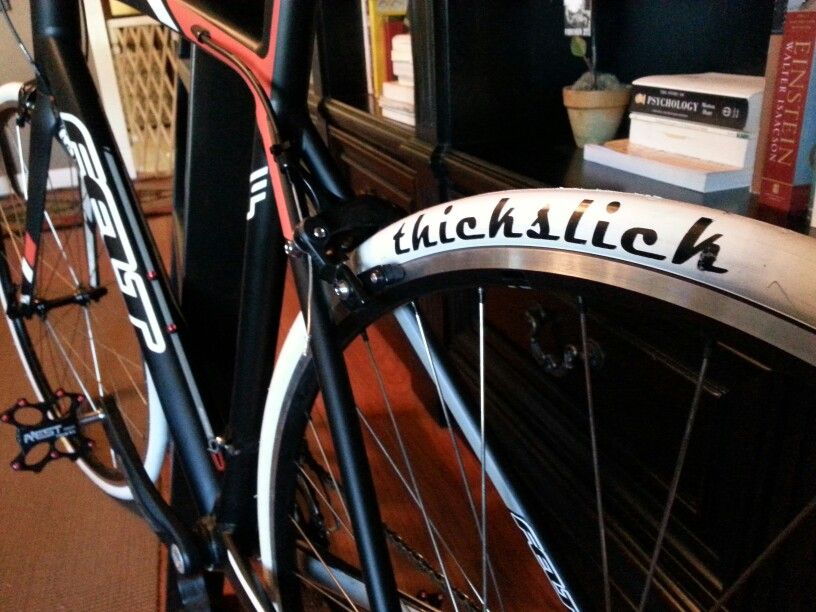 0, 50-559, 60 TPI
0, 50-559, 60 TPI
Buy
Before choosing a tire, the first step is to determine its size (by wheel diameter and width). It depends on what rims your bike has.
Check the sidewall of the tire - there are numbers indicating its size (for example, as in the picture, the outer diameter is 27.5'' and the tire width is 2.2'')But the types of markings are different:
The diameter according to the universal system for measuring tires (ISO 5775 or ETRTO ) indicates the inner diameter (in millimeters, mm) and the width of the tire (also in millimeters, mm).
Consists of two numbers, for example, 57–559
English and French manufacturers may indicate a different marking: outer diameter for tire width (in inches, ''). Sometimes tire height is added (decimal, inches, '').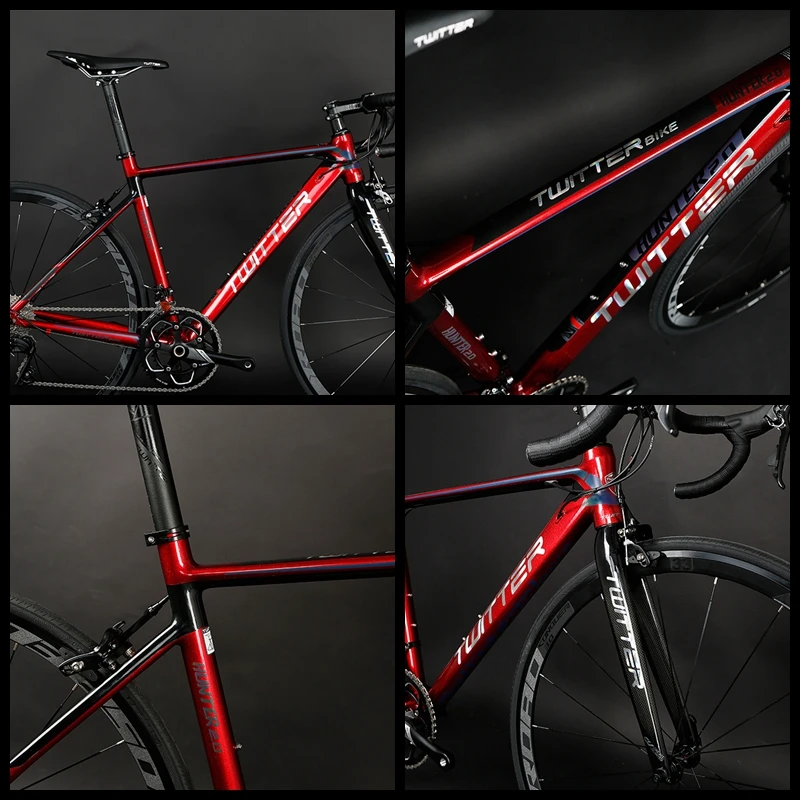
Diameter and width: two numbers or a decimal, e.g. 28 x 1.4, 28 x 1 1/8. View Diameter, Height and Width: 28 x 1 5/8 x 1 3/8
where A is the largest).
For example, 700 x 35C
Important! You can also find out the tire size:
A few tire recommendations:
 7 –0.9'' (18–23 mm).
7 –0.9'' (18–23 mm). Expert recommends
38,999 RUB
Stern | Mountain bike Stern Motion 2929", 2021
Buy
44,999 ₽
Stern | Mountain bike Stern Motion 4. 0 27.5", 2021
0 27.5", 2021
Buy
17,999 ₽
Denton | Women's mountain bike Denton Aura 1.0 26"
Buy
27,999 ₽
Stern | Mountain bike Stern Energy 2.0 27.5", 2022
Buy
44,999 ₽
Stern | Mountain bike Stern Force 2.0 29", 2021
Buy
24,999 ₽
Stern | Bicycle for boys Stern Action 24 Alt 24", 2022
Buy
32 999 ₽
Stern | Mountain bike Stern Motion 1.0 27.5", 2021
Buy
27,999 ₽
Stern | Women's mountain bike Stern Angel 2.0 27.5", 2022
Buy
Final price
44,999 ₽
Trek | Teenage bike Trek Precaliber 20 Fw 20", 2022
Buy
24 999 ₽
Stern | Mountain bike Stern Energy 1.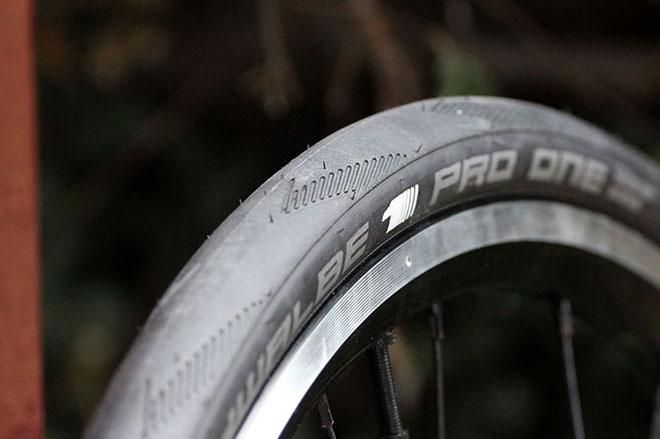 0 Sport 26", 2021
0 Sport 26", 2021
Buy
17,999 ₽
Denton | Mountain bike Denton Storm 2.0 26"
Buy
Final price
71 499 ₽
Trek | Mountain bike Trek Marlin 4 29", 2022
Buy Now
Slick
Designed for asphalt and racing tracks.
The tread is either missing or has shallow drainage groovesSlicks do not create wheel vibration, so the bike can reach high speeds on a flat, smooth surface. But when braking and on wet roads, care should be taken, and it is not recommended to go off-road, as this is fraught with loss of control and breakdown of the wheel.
Semi Slick
Provides reliable grip on sand, suitable for cross-country dirt roads, light off-road and asphalt.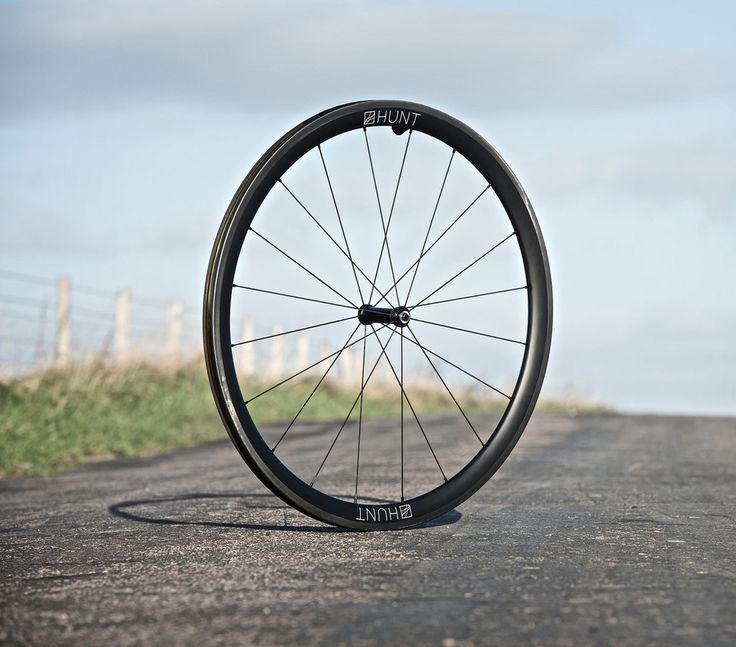 Fast and silent running.
Fast and silent running.
Usually this type of tire comes with a new bike.
Mud/gravel
Ideal for mountain bikes.
Aggressive tread provides reliable grip on gravel, sand and snowDue to the relatively large weight and deep tread, tires create additional resistance, so driving on asphalt is not a good idea.
Crossover/Urban
The rubber of this type of tire is very durable due to reinforced carbon fiber beads.In the middle of the tire there is a tread of high lugs, so these wheels are suitable for traveling on asphalt and dry dirt.
Bicycle tires and tubes
Final price
5 799 ₽
Schwalbe | Tire Schwalbe Durano 700 x 28C
Buy
-10%
Final price Maxxis | Tire Maxxis Ardent, 27.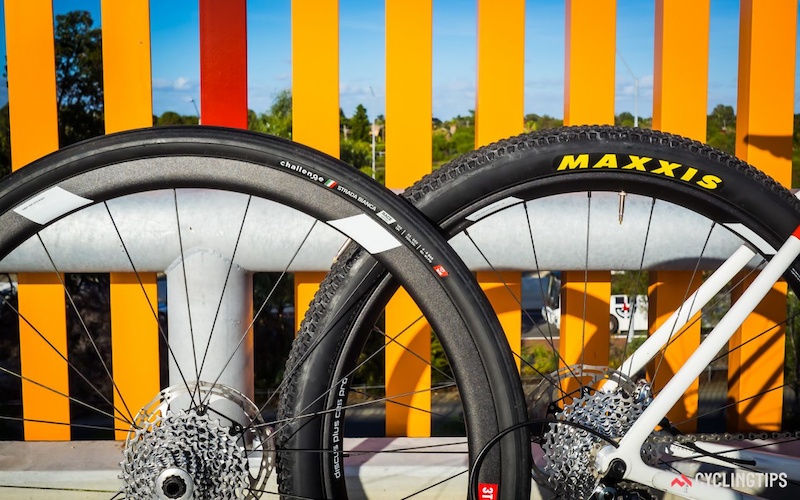 5 x 2.4, 61-584, 60 TPI, Mountain
5 x 2.4, 61-584, 60 TPI, Mountain
Buy
Final price
4 999 ₽
Schwalbe | Tire Schwalbe Durano 700 x 23C
Buy
Final price
4 999 ₽
Schwalbe | Tire Schwalbe Durano 700C x 25
Buy
-20%
Final price Maxxis | Tire Maxxis CrossMark II, 27.5 x 2.25, 57-584, 60 TPI, Mountain
Buy
-20%
Final price Schwalbe | Schwalbe Marathon 26 x 2.0 Tire
Buy
Final price
3 599 ₽
Schwalbe | Tire Schwalbe Land Cruiser Plus 26 x 2.0
Buy
-15%
Final price Maxxis | Tire Maxxis Pace, 27.5 x 2.1, 53-584, 60 TPI, Mountain
Buy
-10%
Final price Schwalbe | Tire Schwalbe Land Cruiser Plus 27. 5 x 2.0
5 x 2.0
Buy
-10%
Final price
3 329 ₽
3 699 ₽
Maxxis | Tire Maxxis Ardent, 27.5 x 2.4, 61-584, 60 TPI, Mountain
Buy
-20%
Final price Maxxis | Tire Maxxis Ikon, 27.5 x 2.2, 56-584, 60 TPI, Mountain
Buy
-15%
Final price Maxxis | Tire Maxxis Overdrive Excel, 26 x 2.0, 50-559, 60 TPI
Buy now
According to the way the tires are installed:
Clincher
Standard tires with beads that fix them on the wheel rim. Installing and changing these tires is quite simple. Their weak point is the camera, which is easy to pierce while riding.
Tubeless (folding)
The function of the camera is performed by a safety cable made of Kevlar threads. Tires are mounted on special rims with high sides and additionally sealed with an anaerobic adhesive-sealant. The absence of a chamber somewhat reduces the weight of the bike, and a punctured tire can be repaired right on the wheel.
Tires are mounted on special rims with high sides and additionally sealed with an anaerobic adhesive-sealant. The absence of a chamber somewhat reduces the weight of the bike, and a punctured tire can be repaired right on the wheel.
Tube
Impenetrable version with increased cord density (up to 320 TPI). Very light, so it is used on sports bikes. The cord does an excellent job with the tasks of the camera. Such a tube is attached to the wheel rim with glue.
The off-road summer tire has a tread depth of 6-8 mm and several layers of extended rubber, making it puncture resistant.
Winter tires are made of soft compound, some are equipped with studs. Winter tire tread depth - 9-11 mm, which provides confident grip on a snowy track and allows you to brake even on icy sections of the road.
EXPERT TIP
Winter tires are recommended to be used at temperatures up to +5 degrees, otherwise soft spikes will quickly wear off on asphalt
In our online store you will find tires for road, racing, mountain and other categories of bicycles.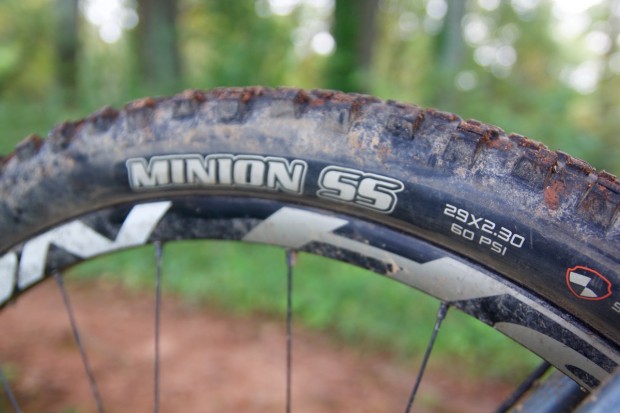 To replace them, contact the Sportmaster service centers.
To replace them, contact the Sportmaster service centers.
Other cycling material
Which lock to choose for a bike
Cycling
The lightest bike models
Cycling
What is a city bike and how is it different from the rest
Cycling
Child bike seat, trailer and other ways to ride a bike with your child
Cycling
Gear shifting on a bicycle: why it is needed and how to do it right
Cycling
What is the length of the bike? And the height? We tell everything about the dimensions and what they depend on
Cycling
What bike to buy for trips in the city and in nature? Here are 5 great options
Cycling
How to store a bike
Cycling
Can you ride a bike in autumn? Of course – and here are some helpful tips
Cycling
Types and disciplines of cycling
Cycling
How fast do they ride bikes?
Cycling
Our PRO-experts tested the Stern Motion 5. 0 bike on a bike tour in Altai. Here are the findings of the participant of the experiment
0 bike on a bike tour in Altai. Here are the findings of the participant of the experiment
Cycling
What is the pressure in the bicycle wheels
Cycling
What muscles work when cycling
Cycling
How far can you bike in a day
Cycling
"Cycling along the Chuisky tract": test drive of Stern Motion 5.0 bikes on the most beautiful road in Russia
Cycling Tourism
At what age can you ride a bike?
Cycling
Advantages and disadvantages of electric bicycles
Cycling
What speed can you reach on a road bike?
Cycling
How to choose a road bike? Here are 5 great models from the Sportmaster PRO range
Cycling
Introducing the winners of the project "You're in the game.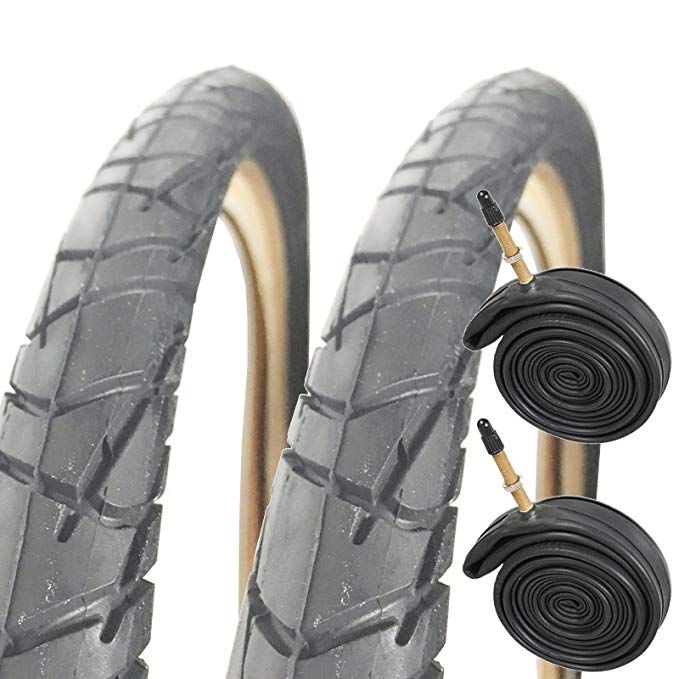 " Meet: Timetime Service
" Meet: Timetime Service
Run Cycling
Are you going to buy a bike? Take a look at these models
Cycling
Traffic rules for cyclists
Cycling
I want to buy a mountain bike. What do I need to know?
Cycling
What does a bicycle consist of: all about the device and details
Cycling
How to choose cycling clothes
Cycling
How to choose bike protection
Cycling
How to set up a bike
Cycling
Bicycle Gadgets
Cycling
How to choose a bike bag
Cycling
General rules for the care of cycling clothing
Cycling
How to choose a bike for a child
Cycling
5 apps for cyclists (iOS and Android)
Cycling
General rules for the care of bicycle protection
Cycling
How to disassemble a bike
Cycling
How to choose a bike by height, weight and purpose
Cycling
How to fix a bike yourself
Cycling
Bicycle history: myths and reality
Cycling
General rules for the care of cycling shoes
Cycling
How to choose bike tires
Cycling
How to choose cycling shoes
Cycling
How to choose a backpack for cycling
Cycling
How to choose a bike according to your riding style
Cycling
How to transport a bike
Cycling
How to choose the protection of the main components of the bike
Cycling
How to take care of your bike
Cycling
How to choose a seatpost for a bike
Cycling
How to choose bike accessories
Cycling
How to use the bike repair kit
Cycling
How to choose a bicycle helmet
Cycling
How to choose a bike tube
Cycling
 Fast rolling, heavy duty training and racing tires
Fast rolling, heavy duty training and racing tires 4.5/5 - (4 votes)
The best road bike tires should be fast, light, supple and bouncy. The tires you choose can make or break your ride, so here's our pick of the best.
Choosing the best road bike tires is the most important decision you will make with your bike. There is no other part of the bike that has a greater impact on your riding experience than the tires you choose. This means that the choice is great. At the same time, it is part of a bike with a relatively low barrier for experimentation. If you drive a lot the tires wear out anyway and you can try something else to see what works best.
You can experiment not only on a regular basis, but also in different situations. We've covered the best road bike tires on this list, but that can mean a lot: there are options for racing, and there are tough enough to count on when you're away from home.
If you're ready to unlock your bike's potential, then keep reading to see our picks of today's best options.
Contents
The ultimate road bike tire for all-weather racing.
SPECIFICATIONS
Protection: Aramid fiber, breaker Tubeless: No: Format: Width: 23, 25, 28 mm Weight: 220 g (700×25)
Weight
REASONS TO AVOID
- Not Tubeless
The P Zero Velo 4S is an all-year training and racing tire that boasts a SmartNET Silica compound and a 127tpi carcass that strikes a decent balance between puncture protection and rolling efficiency.
She also looks good, and blue accents indicate her position in the lineup. In terms of performance, they offer superior grip, speed and water evacuation, making them ideal for wet weather riding. So far, they are available in three sizes - 23, 25 and 28 mm - and cannot yet be used as tubeless.
The ultimate road bike tire for Specialized Cotton tire enthusiasts who want the best puncture protection.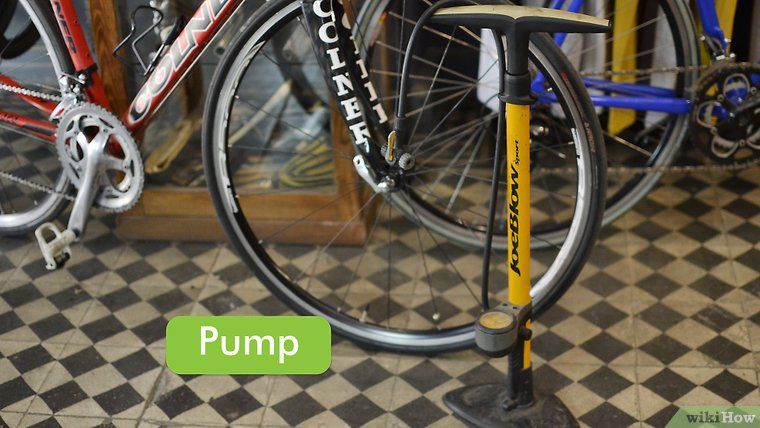
SPECIFICATIONS
Protection: BlackBelt Tubeless: Yes Format: Width: 26, 28mm Weight: 260g (700×26)
REASONS TO BUY
+ Very fast
+ Easy to use
0 + Lightweight
- Limited size
Specialized S-Works Turbo RapidAir is the fastest 28C road tire we've used yet confident in all weather and very easy to run. RapidAir tires are available in 700 x 26C and 28C and are the result of a long process of testing at Specialized's own factory dedicated to making the best tyres.
Specialized has been developing its new RapidAir tires for three years, working closely with the QuickStep team on the evolution of the Gripton rubber compound with a higher silica content and a completely new carcass construction.
Despite their wide dimensions, these tires don't feel as damp and warm as the smoothest 28 tires we've ridden. It is certainly not hard, more purposeful than soft, but it is designed for racing. In addition, today it is an extremely impressive high-speed and high-volume all-round tire that is also easy to live with.
The ultimate road bike tire for GP4000 enthusiasts who have switched to tubeless.
SPECIFICATIONS
Protection: Vectran Tubeless: Yes Format: Clincher tubeless Width: 23, 25, 28, 32 mm Weight: 220 g (700x25)
REASONS TO BUY
+ Performance
+ Weight
REASONS TO AVOID
- Price
- Incompatible with hookless rims
Unsurprisingly, the GP5000 very quickly gained the same level of market dominance as its predecessor, the GP4000, thanks to its smooth and fast operation, tubeless compatibility and the addition of a tanned sidewall.
While puncture protection in both clincher and tubeless tire formats is provided by a layer of Vectran Breaker, the latter adds another line of protection consisting of a latex sealant.
Despite these innovations, Continental has managed to keep the weight as low as, and in some cases even lighter than, the GP4000 at just 220g in a 25mm tire.
The ultimate competition road bike tire.
SPECIFICATIONS
Protection: MicroSkin Tubeless: Yes Format: Width: 25, 28, 30, 32mm Weight: 260g (700x25)
REASONS TO BUY
+ Weight
+ Grip
In our experience, even at a minimum pressure of 70psi, the Pro One provides excellent rolling speed, feedback and compliance. Schwalbe claims the Pro One is 25 percent lighter than its predecessor, which it is, even with the sealant.
In terms of puncture protection, these tires may not be the strongest available, but in tubeless riding, any holes from studs, glass, and flints are quickly sealed with latex sealant. So despite the high price, the Pro One is hard to beat.
The ultimate road bike tire when you need versatility.
SPECIFICATIONS
Protection: Corespun tire, graphene Tubeless: Yes Format: Clincher, tubular Width: 23, 25, 28, 30 mm Weight: 255 g (700×25)
REASONS TO BUY
+ Performance
+ Aesthetics
+ Grip
REASONS TO AVOID
- Price
Vittoria Corsa tires are part of the "Performance Race" tire range and are available in clincher and tubular versions.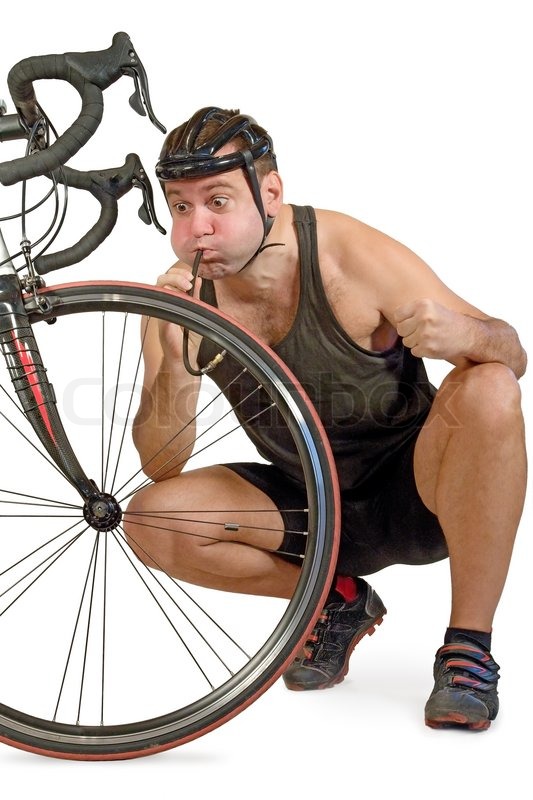 Using an updated four-layer Graphene 2.0 compound, Vittoria claims that rolling resistance, grip, durability, braking performance and puncture protection are vastly improved over previous models.
Using an updated four-layer Graphene 2.0 compound, Vittoria claims that rolling resistance, grip, durability, braking performance and puncture protection are vastly improved over previous models.
Corsa Graphene is part of a three-level range that also includes Corsa Speed and Corsa Control. The Speed model consistently performs well in rolling resistance tests and is the ideal model for trial riders looking for maximum performance. Control is a rugged model designed for fast winter riding. The Corsa model is in the middle, as a balance between these two models. All are available with or without tubes.
In our opinion, the Corsa Graphene is a real contender for the best road bike tire for all-round use, thanks to its excellent puncture protection, light speed and smooth ride.
The ultimate road bike tire when you need a combination of straight-line speed and cornering grip.
SPECIFICATIONS
Protection: BlackBelt Format: Clincher Width: 24c, 26c, 28c Weight: 260g (700x25)
REASONS TO BUY
+ Fast Rolling
+ Lightweight
+ Outstanding Grip
REASONS TO AVOID
- Rubber has been known to peel off the casing
Turbo Cotton is a true racing tire built for maximum grip and even more speed.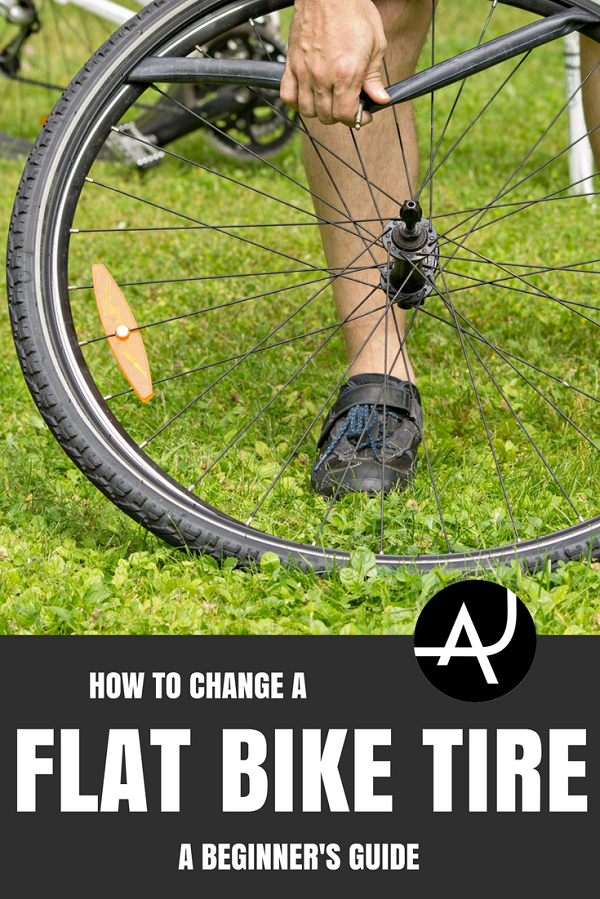 It was released back in 2016 and immediately won acclaim among riders in tight, technical conditions with its relentless grip that simply invites you to push the limits to the limit. It's the best tire for cornering grip in our experience, but we've seen the edges of the rubber peel off the cotton carcass, so watch yours if you're riding rough edges.
It was released back in 2016 and immediately won acclaim among riders in tight, technical conditions with its relentless grip that simply invites you to push the limits to the limit. It's the best tire for cornering grip in our experience, but we've seen the edges of the rubber peel off the cotton carcass, so watch yours if you're riding rough edges.
But that's not all, Turbo Cotton is still the tire that Specialized will put on any of its top race bikes because of its sheer speed. It may have been around for a few years, but the only thing Specialized has done to keep it up to date is a wider 28mm version, as well as a limited edition Hell Of The North that adds a bit more grip.
The best road bike tire for rough roads.
Technical characteristics
Protection: pp3 soundless: Yes format: Clincher, Tubular Width: 25 mm weight: 240 g (700 × 25)
Causes for purchase
+ compliance with standards
+ performance to the touch, yet hardy in character, the Challenge Strada Pro is available in clincher and tubular formats. They look elegant yet retro with tan sidewalls and bold graphics.
They look elegant yet retro with tan sidewalls and bold graphics.
At 240g, they are on the lighter end of the weight scale, yet deliver a responsive and controlled ride quality that is especially noticeable in bumpy terrain.
TheStrada Pro is only available in 25mm and can be used tubeless further solidifying its reputation as a versatile tire.
The ultimate training road bike tire.
SPECIFICATIONS
Protection: Breaker, graphene Tubeless: Yes Bead: wire Format: Clincher, tubular Width: 23, 25, 28, 30 mm Weight: 250 g (700×25, Rubino Pro)
REASONS TO BUY
+ Weight
+ Performance
+ Variety
REASONS TO AVOID
- Puncture prone despite protection measures
The Rubino tires represent the sweet spot in the Vittoria tire collection, serving as training and all-weather racing options. The five-link range offers tires of various functionalities and weight classes - the standard Rubino weighs just 335g, while the race-oriented Rubino Pro Speed weighs just 200g (25mm).
Graphene 2.0 is used across the entire range of models, a compound known for extending life and improving compound performance. The Rubino offers impressive levels of grip and puncture protection, with straight-line speed as a compromise.
The best road bike tires for commuters.
SPECIFICATIONS
Protection: Hard-Case Lite Tubeless: Yes Width: 23, 25, 28, 32 mm Weight: 285 g (700×25)
REASONS TO BUY
+ Light Tubeless
+ Puncture Protection
+ Reflective Option
REASONS TO AVOID
- Heavy
Bontrager's R3 Hard-Case Lite road tires are a combination of speed, grip, durability and protection. They may not match the Corsa or Turbo Cotton in terms of rolling resistance, but they will last significantly longer and offer increased traction thanks to the all-weather safety tread pattern.
More importantly, the R3 Series tires are puncture resistant thanks to Bontrager's proprietary TR-Speed compound and an updated Hard-Case Lite casing.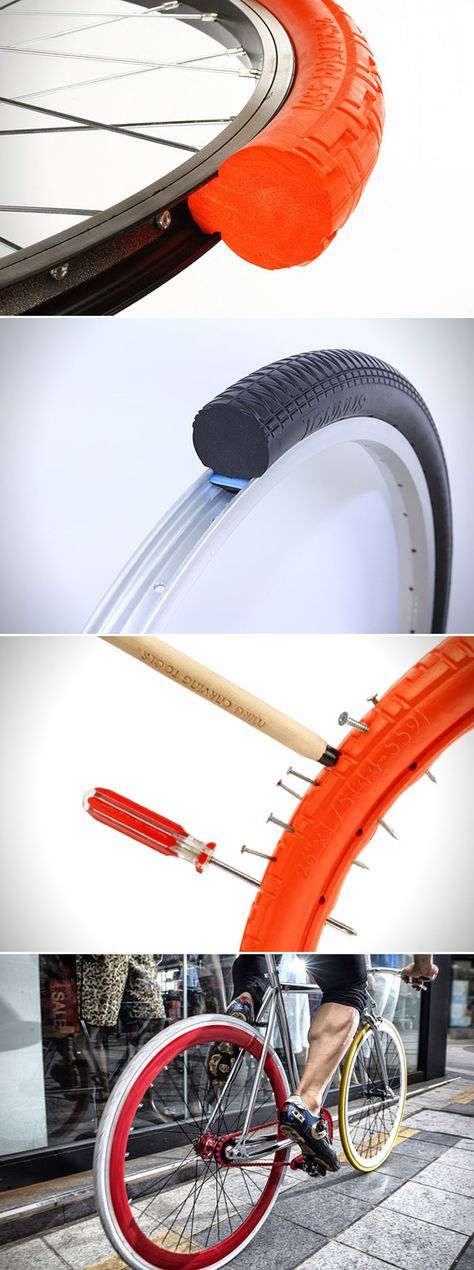 They are available in both tubeless and chambered versions, of which we chose the tubeless version.
They are available in both tubeless and chambered versions, of which we chose the tubeless version.
The range is quite extensive and offers 23-28mm sizes - there is also a 32mm tire that is designed for the tubeless version of the TLR. There is also a model that uses reflective sidewall technology to improve visibility in low light conditions.
The ultimate road bike tire when you want all the benefits of aero.
SPECIFICATIONS
Protection: Vectran Protection Barrier Tubeless: Yes Format: Clincher Width: 25c, 27c, 29c, 31c Weight: 255g (700x25)
REASONS TO BUY
+ Aerodynamic optimization
+ Weight
+ Compatible with hooks
+ Wide Choices
REASONS TO AVOID
- custom sizes
There are minor benefits, and there is the need to make sure that even your tires are optimized for aerodynamics. Enve claims that the SES tire will add roughly one watt of aerodynamic advantage over competing tires.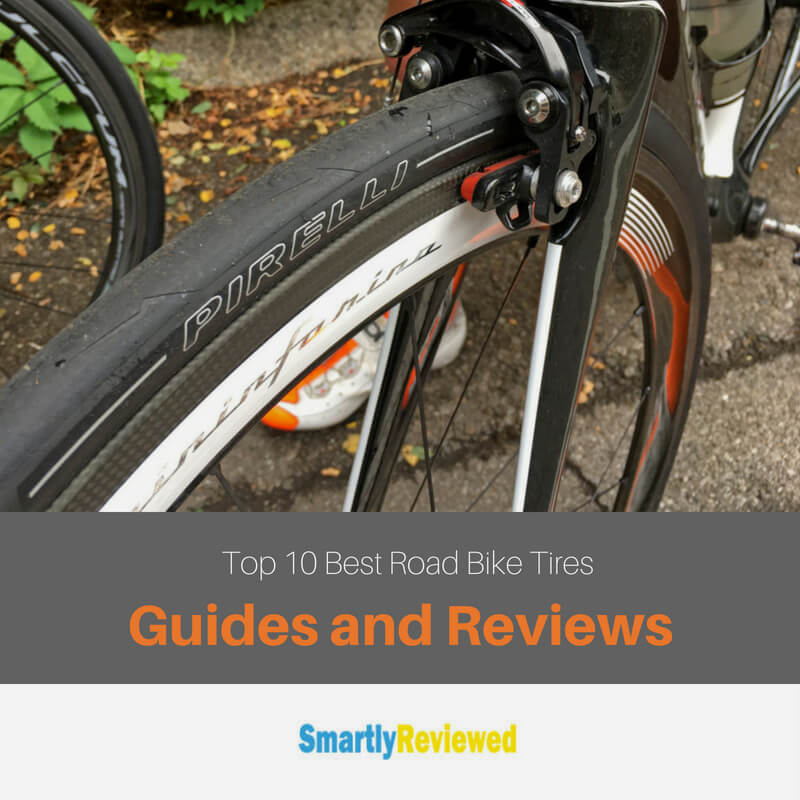 The concept is really meant for those who are looking for every possible optimization, but that's not the only benefit. Just as it makes sense to buy one of the best aero helmets because they are great helmets that are also aero, Enve SES tires are first and foremost great tires. Enve understands that a fast tire should be an all-around tire, and it's this usability that the design team focused on. The tires are light for their size, but not the lightest available. Instead, they are equipped with a Vectran safety barrier because no tire will be fast if it is flat. There are also wide sizes that allow you to customize your ride to your liking. These tires are fast, but not to the point where they become a race-only option.
The concept is really meant for those who are looking for every possible optimization, but that's not the only benefit. Just as it makes sense to buy one of the best aero helmets because they are great helmets that are also aero, Enve SES tires are first and foremost great tires. Enve understands that a fast tire should be an all-around tire, and it's this usability that the design team focused on. The tires are light for their size, but not the lightest available. Instead, they are equipped with a Vectran safety barrier because no tire will be fast if it is flat. There are also wide sizes that allow you to customize your ride to your liking. These tires are fast, but not to the point where they become a race-only option.
The best road bike tire if you want something ultra light.
SPECIFICATIONS
Protection: SPS sidewall protection, Kevlar Tubeless: No Width: 23, 25, 28mm Weight: 220g (700x25)
REASONS TO BUY
+ Weight
+ Aesthetics
+ Now compatible with carbon rims
REASONS TO AVOID
- Not tubeless
Italian tire manufacturer Veloflex calls its clincher tires open tubular, citing the ride quality and feel as real. At 220g, they are also very competitive in this regard and have become the go-to choice for weight lovers around the world.
At 220g, they are also very competitive in this regard and have become the go-to choice for weight lovers around the world.
Due to the problem of incompatibility with non-ETRTO approved wheels, the company has just released a new Master SPS Line rubber designed specifically for all types of carbon wheels. In terms of performance, the tires deliver the same level of rolling efficiency and compliance as the tubes they are based on – thanks in part to the 320 TPI high-density core carcass.
With its signature tan wall design and prominent Veloflex logo, Masters tires are arguably one of the most aesthetically pleasing options on the market.
There are three main types of road tires. Clincher, tubeless and tubular. Tubular tires are rare on modern road bikes as they need to be glued to a rim designed for tubular tires, so we will focus on clincher and tubeless tires.
Clincher tires are probably the most familiar to you as they have been fitted to all sorts of bikes over the years. They are mounted on a wheel with a clincher, and an inner tube must be inserted inside the tire itself. This inner tube is specially sized in circumference and width to match the size of the tire it is installed into. On road bikes, look for inner tubes with presta valves, as they are designed to hold high pressure more securely.
The third is the recent invention of tubeless tires, which has been rapidly developing in the last half decade or so. Tubeless tires are designed to be used in conjunction with tubeless rims, and as the name suggests, they do not require an inner tube. Instead, a small amount of tubeless sealant is poured into the tire. This sealant seals up any holes that might otherwise puncture the tire, allowing you to keep riding.
Potential benefits include reduced weight (because they don't have an inner tube), they often roll fast, they can use lower pressures, and the sealant drastically reduces the risk of puncture.
If you're looking for the best type of bike tire for the road, look no further than your wheels. If you have tubeless wheels, then this will be the best choice. If you don't have tubeless compatible wheels, then you'll have to settle for a tubeless tire.
One way to tell when it's time to replace a tire is to look at the wear indicator. Most road bike tires have a small round groove in the tread. When the surface of the tire is flush with the groove, it's time to replace the tire.
If you can't find the wear indicator, there are other ways to find it. Often the best indicator is that you have begun to slip. As the tire wears, the outer surface becomes thinner and punctures occur more frequently. A square profile also begins to appear. If you haven't used your bike for a long time, look for cracks and rotting sidewalls. Even if the wear is small, these are signs that the tire should be replaced.
There is no single answer that will work for all cyclists in all situations.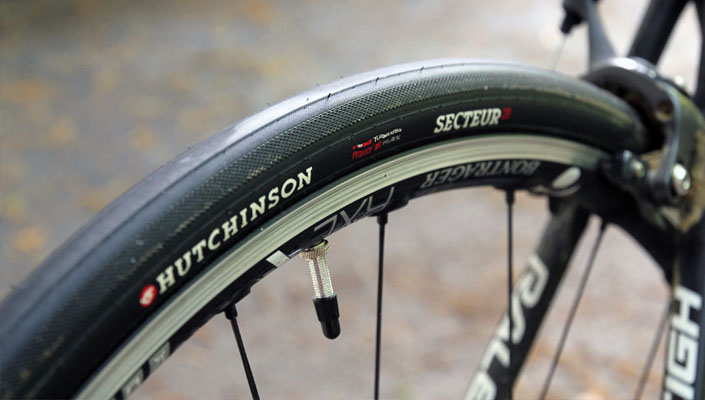 Tire sizing is actually part of a larger conversation that revolves around tire pressure. Smaller tires need more pressure, and we used to think that a thin tire at high pressure would cut through the air faster with less rolling resistance. Science in this area has developed.
Tire sizing is actually part of a larger conversation that revolves around tire pressure. Smaller tires need more pressure, and we used to think that a thin tire at high pressure would cut through the air faster with less rolling resistance. Science in this area has developed.
Two different understandings developed at the same time, and they combined to change the recommendations. One part of the equation is that the road surface is actually not as smooth as we thought. Even high-quality road surfaces are relatively rough, and lower pressure allows the tire to adhere better to it. This means more contact and more speed. At the same time, companies began to view the tire and wheel as a single system. Modern wheels, like the ones we list on our list of the best road bike wheels, use designs that optimize wider tires for more speed and more comfort.
As you can imagine, this is a big topic. There are scientific studies and brand studies. There are many discussions in the world, and you can dive as deep into them as you want.